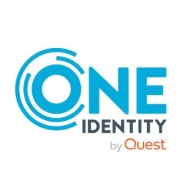

Symantec Identity Governance and Administration and One Identity Active Roles compete in the identity governance category. Based on user reviews, One Identity Active Roles holds the advantage in flexibility and advanced policy features, offering better usability and integration with other systems.
Features: Symantec Identity Governance and Administration provides a comprehensive suite with essential identity management functions like automated provisioning, access request handling, and policy management. Users appreciate its wide-ranging capability, although it's often seen as less adaptable. One Identity Active Roles offers dynamic group capabilities, task delegation flexibility, and exceptional dashboard customizations, enhancing user experience through role-based access provisioning and automated identity lifecycle management.
Room for Improvement: Symantec Identity Governance and Administration requires a significant learning curve, needing improvements in interface modernity and integration capabilities. One Identity Active Roles could enhance its scripting support and improve the cloud integration experience for users. Many also seek improvements in workflow feedback and more intuitive setups.
Ease of Deployment and Customer Service: Both solutions primarily deploy on-premises. Symantec faces criticism for its slow and less efficient technical support, requiring multiple interactions for resolutions. One Identity Active Roles is praised for providing quick and knowledgeable customer support, facilitating smoother operations within complex environments.
Pricing and ROI: Symantec's pricing is positioned as mid-range, offering solid features for traditional setups. One Identity Active Roles is seen as expensive but justifies its cost through robust features and a simple licensing model. Users from both solutions report significant ROI, particularly with productivity and automation gains in user lifecycle management.
One Identity Active Roles provides excellent reporting and auditing functionality, allowing administrators to track permissions, actions, and responsibilities effectively.
It has saved 90% of the time compared to before.
Sometimes having a fix for a bug takes too much time.
One Identity's support is great.
I rate customer service and support as a seven because, although they are helpful when needed, there can be delays in responding to tickets and finding necessary fixes.
If you are a major enterprise customer, it is a matter of scaling out on resources with more memory, disk, and CPU power.
It is very beneficial for large and complex environments.
The solution is highly scalable, with a scalability rating of nine.
There were no major problems with One Identity Active Roles.
The stability of One Identity Active Roles is rated seven.
I would rate the stability as a seven because there are sometimes performance issues, which require restarting the services.
Creating an API accessible from the web.
The interface should automatically scale based on the resolution.
A way to connect to various directories and integrate with cloud directories would be beneficial.
It is quite expensive, costing more than 50 euros per identity.
The pricing is high.
The product is expensive, but if you want to save money, the delegation set-up process is quite easy.
It's improved our security posture. It has limited access to our crown jewels, where all our identities lie within Active Directory.
It helps in removing custom Active Directory delegation, which enhances security by eliminating unnecessary privileges, addressing identity-based breaches by reducing the number of Active Directory delegations.
The most valuable features are the access templates, which allow for granular permissions, and the policies that provide a framework for usage and standardization across entities.


One Identity Active Roles is a highly regarded solution for Active Directory (AD) security and account management. One Identity Active Roles will enhance group, account, and directory management while eradicating the need for manual processes. The end result is a significant increase in the overall speed, efficiency, and security of the organization.
Using One Identity Active Roles, users can:
Managing accounts in AD and Azure AD can be tremendously challenging; continually keeping these important systems safe and secure presents an even greater challenge. Traditional tools can be inefficient, error-prone, and very disjointed. In today’s robust marketplace, organizations are finding it somewhat difficult to keep pace with the constant access changes in a hybrid AD ecosystem. Additionally, there are significant security issues to consider (government compliance, employee status/access changes, and other confidential business requirements). And, of course, there is a requirement to properly manage Active Directory and Azure Active Directory access in addition to managing all the other numerous SaaS and non-Windows applications that organizations use today.
Users can easily automate all of these tedious, mundane administrative tasks, keeping their systems safe and error-free. Active Roles ensures users can perform their job responsibilities more effectively, more efficiently, and with minimal manual intervention. Active Roles was created with a flexible design, so organizations can easily scale to meet your organizational needs, today, tomorrow, and in the foreseeable future.
Reviews from Real Users
A PeerSpot user who is a Network Analyst at a government tells us, “It has eliminated admin tasks that were bogging down our IT department. Before we started using Active Roles, if one of our frontline staff members deleted a user or group, it could take several hours to try to reverse that mistake. Whereas now, the most our frontline staff can do is a deprovision, which just disables everything in the background, but it's still there. We can go in and have it back the way it was two minutes later. Instead of it taking two hours, it only takes two minutes.”
Becky P., Sr Business Analyst at George Washington University, shares, “In addition, with the use of workflows and the scheduled tasks, we were able to automate and centrally manage a number of the processes as well as utilize them to work around other product limitations. Those include, but are not limited to syncing larger groups, which have 50,000 plus members, to Azure AD. We sync up to Azure AD using ARS. If we had not already had ARS in place, it would have been impossible for us to have done so in the time period we did it in. We did it in under six months. ARS probably saves us at least two weeks out of every month. It's reduced our workload by 50 percent, easily.”
The Symantec Identity Governance and Administration (formerly CA Identity Suite) provides comprehensive identity management and governance capabilities with a simple, intuitive user experience. This user experience can dramatically simplify processes such as user access requests and access certifications, resulting in improved productivity and user satisfaction. In addition, the Symantec Identity Governance and Administration performs risk analysis and certification and enables remediation actions in real-time during the access provisioning steps, thereby improving audit performance and risk posture with preventive policy enforcement.
While providing these business and governance-centric capabilities for business users, the Symantec Identity Governance and Administration also delivers core enterprise-grade identity management and governance capabilities, including broad provisioning support for on-premise and cloud apps, extensibility and flexibility to integrate with other IT systems and consumer-grade scale. This means organizations are not forced to choose between usability and performance. With the Symantec Identity Governance and Administration, they can have both.
We monitor all User Provisioning Software reviews to prevent fraudulent reviews and keep review quality high. We do not post reviews by company employees or direct competitors. We validate each review for authenticity via cross-reference with LinkedIn, and personal follow-up with the reviewer when necessary.